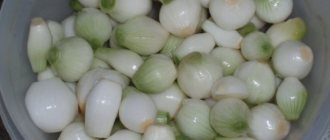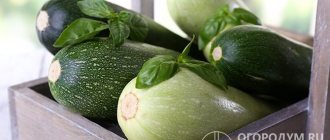Even if you don't grow your own vegetables, you probably often have to stock up on seasonal crops and store beets, carrots, onions and other vegetables at home. As the experience of housewives shows, residents of the private sector have more opportunities to preserve root vegetables until spring than owners of city apartments. In this article we will look at proven methods for storing beets in the cellar in winter and the features of saving them in city conditions.
There is a place to store beets both in a private house and in an apartment.
Proper preparation
Preparing the storage of beets and carrots for the winter takes place in several stages, each of which is very important. The first thing you need to worry about is the time of harvest. Beets cannot withstand freezing . Therefore, it is necessary to collect it before their onset.
The optimal time for the middle zone is early October . For southern latitudes - late October or early November. Read about the timing of carrot harvest by following the link.
Beet harvesting must be done on a clear, sunny day. To be able to dry vegetables on the same day. Drying must be done in the shade outside .
If the weather is unlucky. Then you can dry beets indoors . In this case, the drying time lasts several days.
Thoroughly clean dry tubers from dirt. Do not wash under any circumstances! A wet root vegetable will soon begin to deteriorate. Check the beets - if they are damaged and starting to deteriorate, they must be used immediately. Such beets will not be stored.
Cut off the roots. Trim the central root of the beet with scissors if it is too thick. Also trim the tops with scissors, leaving only 1-2 cm. Do not break off the tops with your hands . At the point of breakage, the beets may begin to deteriorate.
After all these procedures, leave the vegetables for a week in a dry room with good ventilation. And only after this week, place the root vegetables in the room where they will be stored. Read on to find out where and how to store beets and carrots for the winter in an apartment.
Beets are not ordinary, but special
Not all beets can survive the winter even if all the above conditions are met. Of course, it is best to grow your own vegetables to be sure of their quality and freshness. But not everyone has this opportunity, so you need to take the purchase of root vegetables seriously.
It is best to buy beets not at the supermarket, but at the farmers market around October from trusted sellers. In stores, root vegetables are often treated with chemicals against rodents and insects, as well as for longer storage. Moreover, the variety is rarely written on the price tag, but it is very important for winter supplies.
You can always check with the seller at the farm about the variety and the features of its storage.
If you plan to grow root vegetables yourself, then you should pay attention to the following types:
- Bordeaux 237;
- Detroit;
- Late winter;
- Mulatto;
- Salad.
All these varieties have in common a dense peel and good immunity to bacteria that cause rot - this will allow the beets to stay fresh longer. But the popular “Cylinder”, although tasty, is not at all suitable for winter supplies, as it quickly loses its taste and is stored for no longer than two months - it is better to eat it quickly.
Place
A well-known place for storing vegetables is the underground of a house or, in common parlance, a basement . But not every apartment building has space in the basement. Allocated to residents for personal use.
People have tried different places to store vegetables. The most popular of them: glazed balcony, stairwell, storage room, space under the bed .
You can also store beets simply in a box in your room or in the refrigerator. Read about storing carrots in and without a cellar here.
But the last two options can only be considered if long-term storage is not planned.
Read on to learn about the main features of how to preserve beets and carrots at home.
Which beets store well - find out the truth about the varieties
Early and mid-early varieties are suitable for consumption immediately after harvesting, mid-season varieties are acceptable for storage in the winter, but late varieties of beets are ideal for wintering. The optimal ones are those that are adapted to local climatic conditions, and ideally, bred in the region itself.
In Siberia , Mulatto, Rocket, Cylinder Vital, Pablo F1 ripen well.
for the Urals are those that tolerate early cold snaps well - Boltardi, Madame Rouzette, Matryona, Tsilindra.
In the middle zone , in addition to the listed beet varieties, Tsyganochka, Smuglyanka, Tenderness, Mona, Larka, Crosby, Kestrel, Cardinal, Egyptian flat, Bon-Bon F1, Bordeaux 237, Incomparable, Gribovskaya, Renova, Detroit, Libero are popular.
cross-section of beets - in the photo
Medium-sized root vegetables are best stored, 10-12 cm in diameter, without cracks, dents, scratches or other defects, fully ripe, juicy and elastic.
What should I store it in?
So, when you have already decided on the location of the vegetable for the next few months, it is worth thinking about ways to store beets for the winter at home. This largely depends on the expected duration of storage of beets and the chosen location .
If you plan to use beets within the next month, then storing them in the refrigerator in regular plastic bags is also suitable. The bags should not be tightly closed so that the beets do not spoil from excess moisture.
You can make small holes in the bag yourself . There should also not be too much moisture in the refrigerator itself.
See the photo for the best way to store beets underground.
You can store beets in special boxes right in the kitchen. It is better to keep such a box away from the stove. Better near the balcony door or window. You can store beets a little longer in the shade , under the bed or in the pantry in large bags. 20-30 kilograms. Again, the bag should not be tied, otherwise the beets will begin to rot.
If you plan to eat beets collected in the fall until spring, then it is worth considering other options. It is very good to store beets in wooden boxes lined with film. The beets are sprinkled with wood ash , chalk shavings, sawdust, sand, or each tuber is dipped in a clay mash.
All this is done to ensure that the vegetables do not come into contact with each other. This significantly extends their shelf life. The sand must be well calcined before use.
In the house, boxes with root vegetables go down into the underground. In an apartment, you can store them on the staircase or on the balcony. The balcony must be glazed.
Before the onset of frost, you don’t need to wrap the beets . Then be sure to cover it on top. Old cotton blankets are quite suitable for this purpose.
Features of Shared Storage
The storage conditions for beets and carrots are largely the same. They can be stored in one cellar or on one balcony . And even in one box. But only on the condition that they do not touch.
A layer of sand (sawdust, wood ash) is poured into the box, then vegetables are laid out. Be sure to be a short distance from each other. Then another layer of sand. And again vegetables.
When stored in one bag, the keeping quality of both carrots and beets decreases. And, accordingly, the shelf life of vegetables decreases.
Deadlines
Even at room temperature, beets can be stored for about a week . Thick skin prevents rapid loss of moisture. Keeping the root vegetable in the refrigerator, in a plastic bag, extends the shelf life to up to a month.
Sprinkled with sand, sawdust, ash and chalk shavings, as well as treated with a clay mash, vegetables can be stored for about four months if placed directly in the room.
And until the next harvest, if placed on a glazed balcony. Provided that the temperature conditions are observed and the air humidity meets the requirements. The material about the proper preparation of carrots for storage for the winter will be interesting.
To increase the shelf life of beets, you need to sort through the vegetables from time to time. Remove spoiled fruits from boxes and bags. You shouldn't do this too often. The skin may be damaged. When storing in the refrigerator, condensation must be prevented.
Storing beets in plastic bags , in bags for the winter, as well as how to store beets without a cellar further.
Methods
Plastic bags
Beetroot can be stored in plastic bags subject to the following conditions :
- Check all vegetables thoroughly.
- Fill a 35-40 liter bag with vegetables.
- Do not close or tie.
- Make frequent small punctures throughout the entire area of the bag.
- Place the package in a cool place.
The temperature should not exceed 10 ºC. When making punctures, be very careful. To avoid damaging the fruit.
Banks
There is such a way to store carrots : when they are washed, dried and placed in three-liter jars with the tops facing up.
Then this jar is turned upside down and placed on a shelf in the cellar.
Based on the fact that the storage conditions for beets and carrots are similar, it can be assumed that this method is also suitable for beets.
The only difference between these root vegetables is the shape and size. After all, large and medium-sized beets simply won’t fit into the neck. And, therefore, this storage method is relevant only for small beets.
Fridge
As already mentioned, beets can be stored in the refrigerator for about a month. This method is good for a small amount of vegetables .
If the refrigerator is exactly what you need, then you need to do the following :
- Select medium sized fruits.
- Check for rot and damage.
- Wipe the dirt off the beets with a dry cloth.
- Trim the tops to 1 cm.
- Place root vegetables in a bag.
- Make small holes in the bag.
- Place the bag of vegetables in the vegetable drawer at the bottom of the refrigerator.
However, the shelf life of beets in the refrigerator can be extended. If, instead of regular bags, you use vacuum ones. This way beets can be stored twice as long . Read about storing carrots at home here.
House underground
The underground is the most common place for storing vegetables.
Even before storing vegetables in the cellar, you need to do the following :
- Clean up, ventilate.
- Treat the walls with lime solution.
- Rid the cellar of rodents.
- Raise the bottom row, on which the boxes or bags of beets will be located, 15 cm from the floor.
In a subfield prepared in this way, boxes or bags of beets can be placed on the flooring. You can separate a special section and store the beet harvest there. The height of the restriction of this section can reach up to a meter.
In addition, beets can be stored in bulk on shelves covered with straw or burlap. Bearing in mind the danger of contact with the walls, you need to make a limiter here. Also about 15 cm.
Root vegetables should be placed on the shelves in the form of a pyramid. Leaving a gap between the vegetables and the top shelf so that the vegetables do not spoil.
You can put boxes with beets sprinkled with chalk , ash, sawdust and sand into the underground of the apartment. Everything here is the same as when storing in an apartment. There are methods for storing beets such as freezing, drying and drying.
How to store beets in the underground of a wooden house, see the photo below.
Suitable for underground and chatterbox. To do this, you need to dilute the clay with water. So that it becomes liquid. About half. Let the solution sit. It's better to leave it overnight. Then dilute it a little more. Dip each root vegetable into this solution . When the clay dries, transfer it to boxes.
Preliminary actions
Often, gardeners who do not have sufficient experience cause damage to themselves by improperly processing the recently dug crop. If you carelessly pull out root crops or touch them with a knife during the cleaning process, the infection process has begun, which means that diseases, rot and crop loss are inevitable.
Harvesting rules
It seems there is nothing simpler: pull the tops and pull out the beets. But this can easily damage the thin skin of the root crop and shorten the shelf life. It is worth digging slightly with a shovel or fork, lifting it a little along with pieces of soil. And only then pull the leaves or pick them out with your hands.
Fine, dry autumn days are good for cleaning. The crop must be harvested before the first frost; the parts protruding from the ground are very sensitive to cold, and even with slight frost they deteriorate and become unsuitable for storage.
Drying root vegetables
Before storing for storage, all root crops are dried:
- If the crop is harvested in dry weather, drying is possible in the beds. A few hours is enough. When beets are left out in the open for too long, they begin to lose moisture and wilt.
- If root crops are taken from damp soil or collected in rainy weather, dry them in well-ventilated areas, scattering the crop in a thin layer. Drying indoors lasts much longer: 2-3 days - a week.
Trimming and sorting
The treatment is carried out after drying, following a certain sequence. Here she is:
- Root vegetables are slightly cleaned of excess soil. There is no need to knock them against each other or remove pieces of dirt with knives, wood chips or other sharp objects. Any, even the most minor, damage to the peel opens the way for infections, and there are enough harmful microbes in the soil.
- The tops are not cut cleanly, leaving “tails” about 1 cm long. A known mistake is to break off (unscrew) the tops by hand. It's better not to do this.
- When removing lateral roots, damage to the root crops must be avoided.
- The main root can be cut off, leaving a tail of about 5 cm. When it is not too long, it is recommended to save it.
- Root vegetables are not washed with water.
Only healthy fruits, not too large and without damage, are selected for storage. Large beets have coarse fiber, are poorly stored and take a long time to cook.











